If you’re having a roof leak, or notice water on your walls, it may be because of bad or missing roof flashing. As homeowners, no matter what we repair – be it our garage door or trenchless sewer repairs – we always look to educate ourselves and here are the important aspects of roof flashing.
What is Roof Flashing? Roof flashing is made out of thin metal strips used by roofers to protect all areas on your roof from water damage. The metal is usually aluminum, steel, and copper and is used in areas such as skylights, chimneys, vents, roof valleys, and areas where the roof meets the wall.
Roof flashing generally lasts longer than your roof, which is why it should be done properly from the start. Some contractors may do a poor job on your roof flashing and tell you it’s not important. But roof leaks will often happen because of misapplied flashing, and this will damage the roof, the walls, and your entire home investment.
Did you know? According to national surveys, homeowners often underestimate the importance of roof flashing, even though its cost per foot is relatively affordable considering its crucial role in protecting your home. In fact, the average roof flashing cost per foot varies depending on the material, but it’s a small investment for significant protection.
Because of this, you should spend some time in the attic looking for signs of bad roof flashing, such as water stains in places around chimneys, vents, and vertical wall elements above the roof.
What is Roof Flashing and Why is It Necessary?
Simple: Roof flashing protects your roof from water damage.
Without roof flashing, your house or building is vulnerable to water damage because the water could get under the shingles and into the underlayment. This may decrease your house property value. An underlayment (roofing felt) protects the roof deck from moisture and serves as backup protection in case the water gets under the shingles.
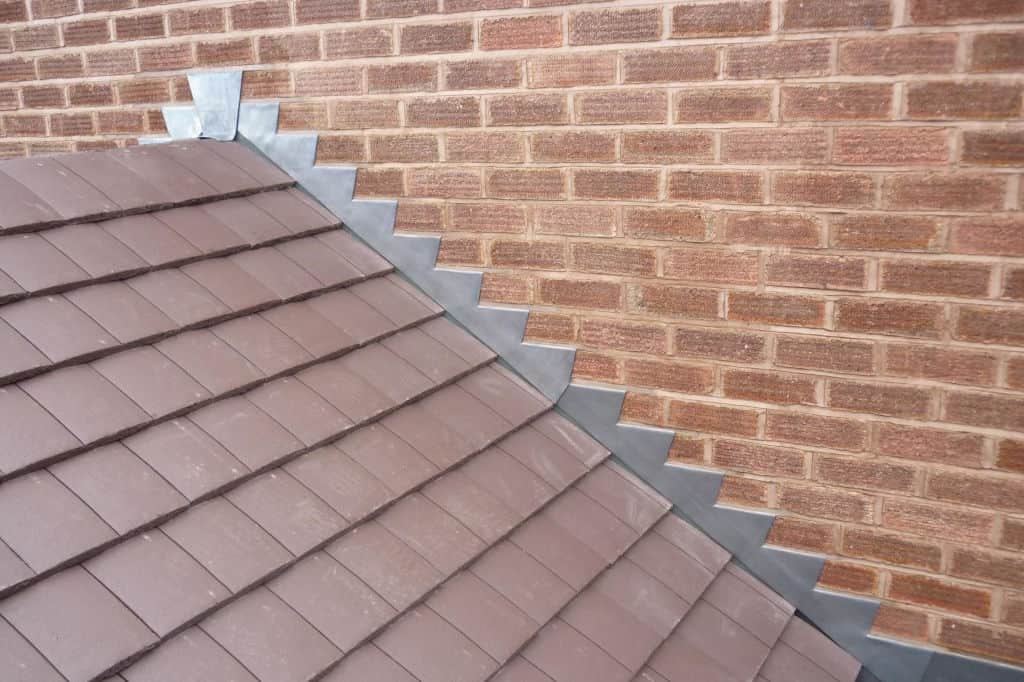
In the US, most states have a code on roof flashing, but many of them aren’t overly specific.
Florida Building code gives more specific instructions. It requires that roof flashing is installed in all these vulnerable places on your roof, in such a manner as to prevent moisture from entering the wall and roof through joints in copings, at intersections with parapet walls, and other penetrations through the roof pane.
Here are the Florida Building code requirements for the metal flashing material:
| MATERIAL | MINIMUM THICKNESS (in) | GAGE | WEIGHT (LBS PER SQ FT) |
|---|---|---|---|
| Copper | 1 (16 oz) | ||
| Aluminum | 0.024 | ||
| Stainless Steel | 28 | ||
| Galvanized Steel | 0.0179 | 26 (zinc coated G90) | |
| Aluminum Zinc Coated Steel | 0.0179 | 26 (AZ50 Alum Zinc) | |
| Zinc Alloy | 0.027 | ||
| Lead | 2.5 (40 oz) | ||
| Painted Terne | 1.25 (20 oz) |
Fema.gov has some good recommendations on roof flashing and roofing in general in their Home Builder’s Guide to Coastal Construction. It’s a fact sheet that provides technical guidance and recommendations concerning the construction of coastal residential buildings.
Types of Roof Flashing
The most commonly used types of flashing are: apron flashing (continuous flashing), step flashing, counter flashing, and cricket flashing.
Metal roof flashing types:
Apron Flashing (continuous flashing)
This type of flashing consists of a single piece of metal that carries water down to the shingles or gutter below. It acts as “an apron” and has built-in expansion joints so it can expand and contract due to weather changes. This way roof flashing won’t break and will move with the house.
Step flashing
Step flashing is used as roof-to-wall flashing, or in areas where your roof meets a side wall. The majority of step flashing material is aluminum or galvanized steel. With step flashing, multiple pieces of flashing are installed in layers with shingles to ensure the water flows away from the wall.
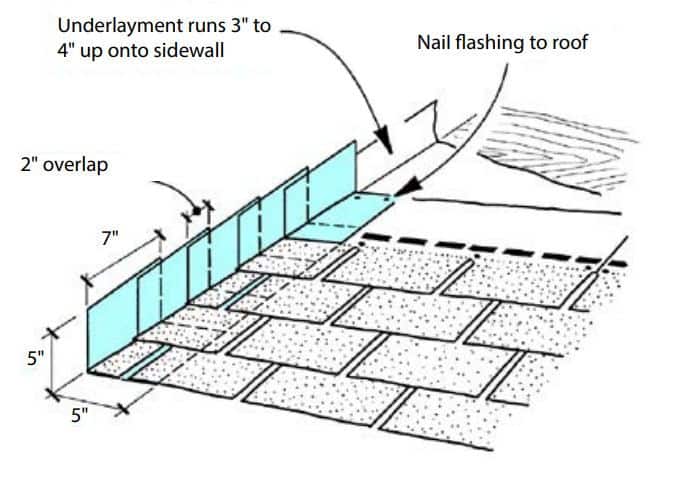
Counter flashing
Counter flashing is used on chimneys and walls just like step flashing. However, unlike step flashing, the piece of flashing is sawed into an existing mortar joint and the metal comes over the top of the brick.
It is used to cover and protect the upper edge of a base flashing and its associated fasteners. A second (upper) layer of protection is provided to keep water from penetrating behind the first (lower) layer.
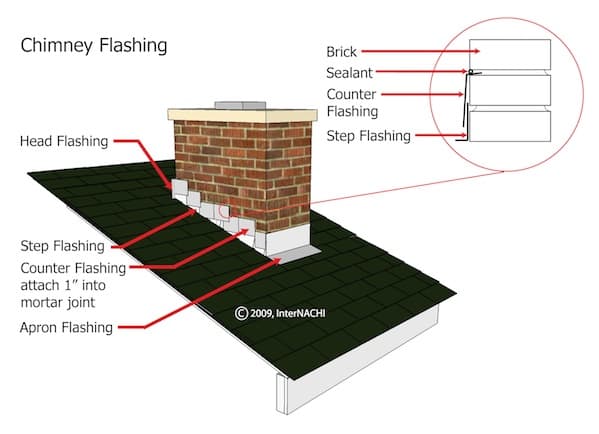
Interestingly, counter flashing repairs are often overlooked until they lead to more significant problems. Typically, the cost to repair roof flashing like this can range based on the complexity of the work and local labor rates, but early intervention always saves in the long run.
Kickout flashing
Kickout flashing is installed where the lower portion of a sloped roof stops within the plane of an intersecting wall cladding to divert or “kick out” water away from the assembly. Also called “diverter flashing”, it diverts rainwater away from the cladding and into the gutter.
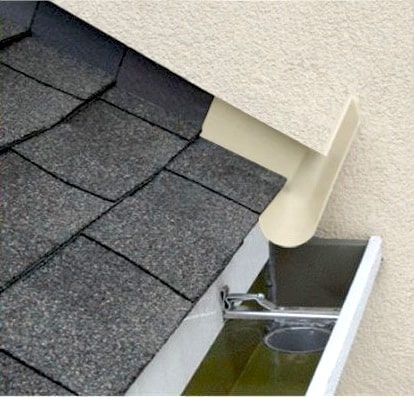
Base flashing
Base flashing is added as the bottom piece as a part of continuous (apron) flashing. We use it in places where the roof requires different pieces of flashing, and place it on the opposite to counter-flashing, or below it. Chimneys often use base flashing.
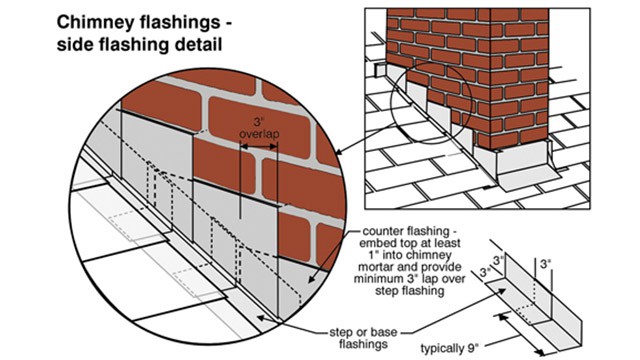
Valley flashing
Valley flashing protects the area where two slopes of a roof come together to form a valley. Roof valleys should usually have metal flashing but aren’t always required, in which case they should have an additional underlayment lining the valley. We can do this with several layers of roll roofing.

Drip edge flashing
Drip edge flashing (gutter flashing) keeps the water running under the shingles at the edge of the roof. It protects the fascia boards from dripping water, sends the water to the gutters, and also keeps water from dripping behind them.
A drip edge is not always required, however, it is advisable to have it installed to protect the walls and sidings of the house.
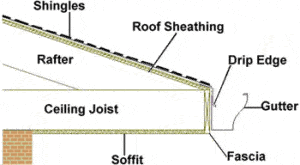
Many homeowners are surprised to find out that the absence of drip edge flashing can sometimes lead to the need for comprehensive gutter repairs or replacements, adding an unexpected expense. This highlights the interconnected nature of roofing components and the overarching importance of regular inspections.
When to Replace Roof Flashing?
Roof flashing should be made from corrosion-resistant metal and should last for a long time. Typically, it should last longer than your roof, which is why we should try to do regular maintenance of our roof flashing.
To figure out if you need to replace roof flashing, carefully take out the flashing without damaging it, and inspect it. If the flashing shows no rusting and the metal is in good shape, then it can be re-used. Step flashing can be difficult to reuse, however you may be able to salvage other types of roof flashing.
In most cases, it saves costs to reinstall your flashings but should be done carefully.
Should You Remove Existing Flashing When Replacing a Roof?
It is always suggested to replace the roof flashing when replacing a roof, however, this may not be necessary if the roof flashing is in good condition, especially if it’s copper or steel.
It will depend on the flashing type of shingles and the quality of work done.
Typically,
- if the counter flashing is in good shape, then you can re-use it. However, step flashing should probably be changed, unless it’s in great shape and the right spot for the new shingles.
- If you have through wall counter flashing, it will have to stay since it is integrated into the masonry.
- If you have reglet cut flashing then it can be carefully replaced if it’s in bad shape (or if you don’t like how it looks).
- All valley flashings, soil vent flashings, and roof jacks should probably be replaced.
- Combustible air pipe kits (base flashing, storm collar, cap, and potentially the double-walled pipe itself should be replaced, caulked, and painted if they are in bad shape.
How to Replace Roof Flashing?
Whether you should do it yourself or hire a professional depends solely on your skills, and time available to get familiar with the process and products. Replacing roof flashing requires time and skill, and I would need a whole new article on how to do it. All I can do is suggest a few resources to learn the process and get an idea of how to do it.
Step flashing is the most difficult of all, and the most time-consuming. Unless you’re somewhat skilled in flashing, you might want to leave it to a professional.
Since there are all kinds of roof flashing types and techniques, it’s almost impossible to answer this question on how to replace roof flashing unless you go into detail for each one.
Therefore, here’s a video on how to fix damaged roof flashing:
and here’s another one:
Roof Flashing Repair Cost?
Roof flashing costs from $14 to $25 per linear foot on average. Your total roof flashing costs for a small area of roof will be from $200 to $500 on average, often going up to $1000, depending on the type of roof and materials used.
Roof flashing repair cost varies depending on several factors. First, it depends on the type of roof that you have. For example, flashing around skylights might cost more than flashing around chimneys (unless it’s a big chimney, in which case it could cost up to $1000). If you have to pay for shingles to be replaced, this will cost even more. Below is a table on the average roof flashing repair cost.
| Roof section/type | Cost to repair flashing | Cost to replace flashing |
|---|---|---|
| Chimney flashing | $200-$500 | $350-$1500 |
| Skylight flashing | $200-$500 | $700-$1500 |
| Valley flashing | $350-$1000 | |
| Drip edge flashing | $1-$2 per linear foot | $1-$2 per linear foot |
| Vents flashing | $200-$500 | |
| Flat roof cement flashing | $10 – $25 per square foot | $10 – $25 per square foot |
If you’re looking to start a roofing company, check out some tips on how to become successful sooner. Also, consider virtual debit/credit cards, as a way of payment for your employees. Or as a way of purchasing more securely, or anonymously through digital wallets. You may even be able to save costs and time.
When evaluating costs, it’s useful to know that the average roof flashing cost per meter tends to be slightly more efficient for larger installations than per foot pricing, especially when dealing with bulk orders.
Do you need flashing on a flat roof?
Flashing is extremely important for flat roofs, because there is as much, or greater chance of water pooling on the surface of the roof and seeping through the membrane. It also protects the roof during a storm, as strong winds drive rain under tiles or through gaps.
US General Services Administration has some guidance on making repairs to metal flashing. GSA says that flashing is usually a weak part of the roofing system and, therefore, should be inspected regularly for damage or deterioration.
Flat roof flashing is always recommended, and necessary to prevent roof leaks. The most common reason for roof leaks on flat roofs is damaged perimeter flashing.
What kind of flashing do you need for a flat roof?
The most important flashing on a flat roof is edge flashing. Usually, two flashings are used, one made of metal and one of rubber, to provide more protection. This is because rubber is less susceptible to becoming damaged through thermal expansion, so if the metal gets damaged the rubber is there as a backup until you get your roof repaired.
You also need flashing around chimneys, vents, and all other areas where protection is needed.
Flat Roof Flashing Material
Here are the most common flat roof flashing material types:
- Aluminum
- Copper
- Galvanized Steel
- Stainless Steel
- Zinc Alloy
- Rubber
- Roofing Felt
Copper looks the nicest but is also one of the most expensive ones. Galvanized steel and even aluminum are perfectly fine for most roof flashing jobs. Sometimes, rubber is used next to steel or aluminum, and other materials can be combined as well. It’s completely up to you which metal to choose, but it’s best to consult a professional or let them do it for you.
It’s worth noting that flat roofs, due to their design, often require more frequent check-ups and maintenance. Regular check-ins can help spot early signs of wear and tear, ensuring that you’re always ahead of potential issues.




![How Much Do Shipping Containers Cost? [Full Guide] Shipping Container retail shop (cost)](https://howmonk.com/wp-content/uploads/2020/03/Shipping-Container-retail-shop-300x200.jpg)





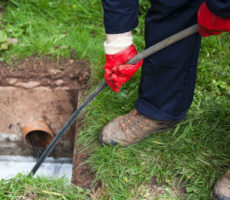
![How Long to Wait Before Mowing New Grass? [Guide + FAQs]](https://howmonk.com/wp-content/uploads/2022/06/push-mower-cutting-grass-on-lawn-230x200.jpg)
